Scientific name Ulmus crassifolia Rank Species | Genus Ulmus Higher classification Elm | |
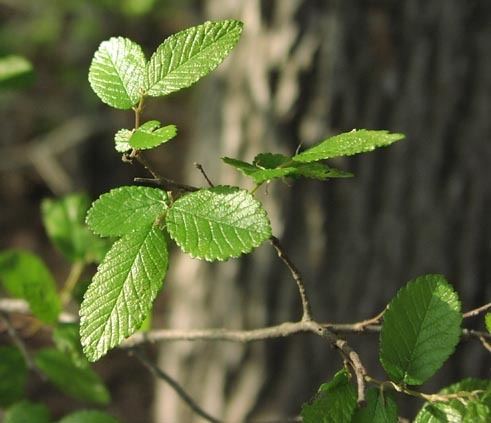 | ||
Similar Elm, Ulmus alata, Ulmus thomasii, Ulmus americana, Ulmus serotina | ||
Ulmus crassifolia , the Texas cedar elm or simply cedar elm, is a deciduous tree native to south central North America, mainly in southern and eastern Texas, southern Oklahoma, Arkansas and Louisiana, with small populations in western Mississippi, southwest Tennessee and north central Florida; it also occurs in northeastern Mexico. It is the most common elm tree in Texas. The tree typically grows well in flat valley bottom areas referred to as 'Cedar Elm Flats'. The common name 'cedar elm' is derived from the trees' association with juniper trees, locally known as cedars.
Contents
- Description
- Pests and diseases
- Cultivation
- Notable trees
- Cultivars
- Hybrids
- North America
- Europe
- Australasia
- References
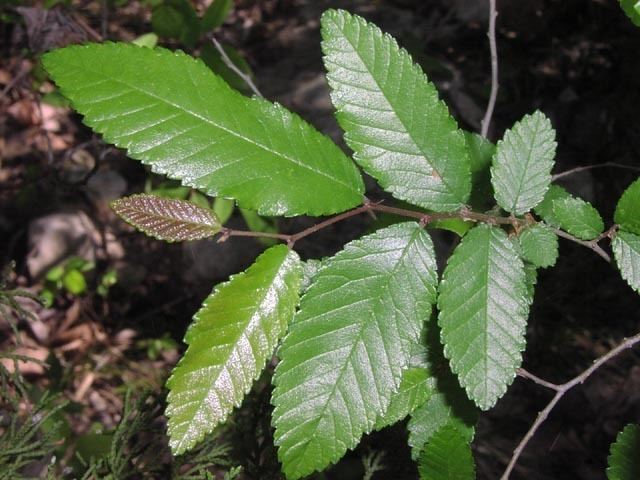
Description
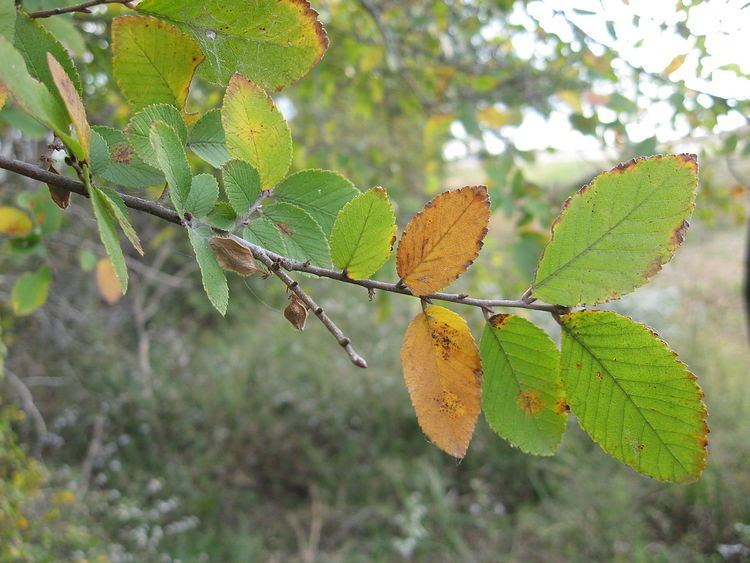
The cedar elm is a medium to large deciduous tree growing to 24–27 m tall with a rounded crown. The leaves are small, 2.5–5 cm long by 1.3–2 cm broad, with an oblique base, and distinguish it from Ulmus serotina with which it readily hybridizes in the wild. Leaf fall is late, often in early winter. The wind-pollinated apetalous perfect flowers are produced in the late summer or early fall; they are small and inconspicuous, with a reddish-purple color. The fruit is a small winged samara 8–10 mm long, maturing quickly after the flowering in late fall.
Pests and diseases
Cedar elm is susceptible to Dutch elm disease (DED), though less so than American elm, and moderately damaged by the elm leaf beetle Xanthogaleruca luteola. The tree also suffers from a vascular wilt, the symptoms often confused with those of DED.
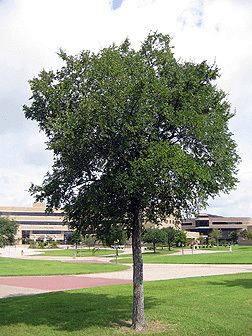
Cedar elms are very susceptible to mistletoe. Mistletoe is a parasite that roots itself in to the vascular system of the tree, thus stealing valuable nutrients and water. In some cases, if not removed the parasite can be devastating to large sections of trees and even fatal. They create club like branches that die out at the ends. These "club" branches create openings for future pests like the elm beetles and carpenter ants. There are no known treatments that are safe enough to kill mistletoe without killing the tree. Removing the mistletoe manually is not a guarantee, however it is the best known method for control.
Cultivation
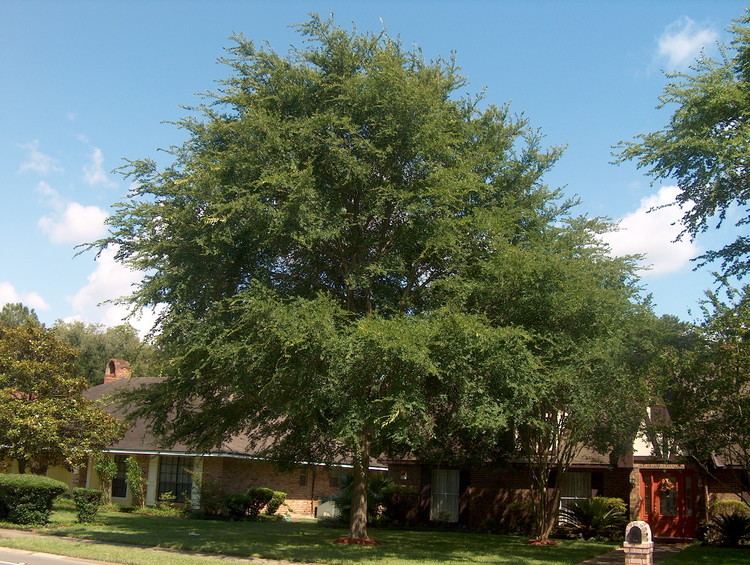
Owing to Dutch elm disease, the cedar elm is now rarely cultivated in North America. It is extremely rare in cultivation in Europe, and Australasia. Henry (1913) and Bean (1988) note that it does not thrive in northern Europe, where the branchlets often die back. Specimens supplied by the Späth nursery to the Royal Botanic Garden Edinburgh in 1902 as U. crassifolia may survive in Edinburgh as it was the practice of the garden to distribute trees about the city (viz. the Wentworth Elm). A small elm with leaves matching the RBGE's 1902 herbarium specimens of Späth's clone (see External links below) stands in Calton Hill Park (2016), and may be regrowth from one of the three.
Notable trees
The USA National Champion, measuring 37 m high in 2001, grows in the Meeman-Shelby Forest State Park Tennessee.[1]
Cultivars
Hybrids
North America
Europe
Australasia
North America
Widely available
Europe
Australasia
None known.
